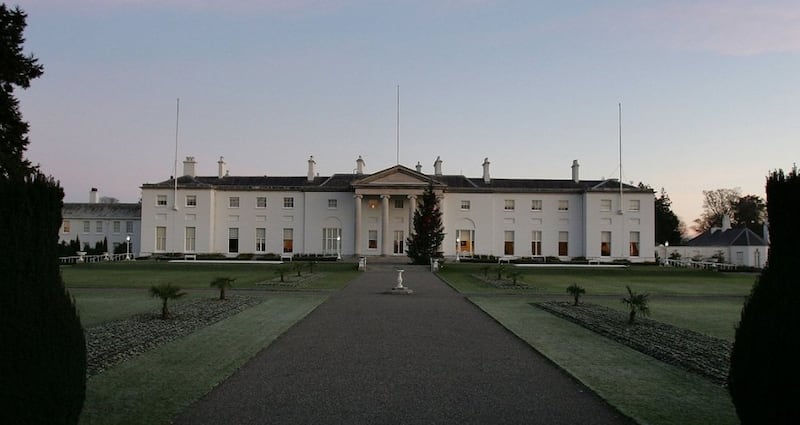Michael D Higgins has beaten his own 2011 record by securing the largest number of votes in Irish presidential election history, topping the poll in every constituency and winning on the first count in the 2018 contest.
President Higgins secured 822,566 first-preference votes, up from the previous record he set in the 2011 election with 701,101 and the highest number in any of the elections for the office of President since it was inaugurated in 1938.
Taoiseach Leo Varadkar described it as a “historic victory”, while Labour leader Brendan Howlin said it was “groundbreaking”.

At 43.87 per cent the 2018 ballot had the lowest turnout in any presidential election. The previous low was in 1997, when 47.6 per cent of the electorate turned out for the election of Mary McAleese.
The highest turnout of 65.3 per cent was in 1966, the last time an incumbent was challenged.
In 1966, Éamon de Valera was re-elected by a margin of just 10,717 votes against Fine Gael candidate Tom O’Higgins in an election where the president did not campaign and there was no television coverage.
Mr O’Higgins ran again in 1973 and expected to be elected based on his first attempt, but he was defeated by Erskine Childers, who had a relatively comfortable 48,096-vote victory.
Mr de Valera, however, retains the record for the highest percentage vote in a presidential election. In 1959 when he first stood for the Áras he secured 56.3 per cent of the vote against his rival Seán Mac Eoin.
President Higgins received 55.81 per cent of the vote in 2018, but was contesting a six-candidate race.
Highest turnout
The results also show that the highest turnout was in Wicklow, followed by Clare and Cork North-West, the only three constituencies to top 50 per cent.
In Wicklow, 50.71 per cent of voters exercised their right to vote, while in Clare 50.42 per cent of the electorate voted and 50.26 per cent did in Cork North-West.
Dublin Bay North, usually the constituency with the highest turnout for both elections and referendums, trailed in joint 18th place with Cork East, on 44.61 per cent.
Turnout for the blasphemy referendum, at 43.79 per cent, was slightly lower than for the presidential election. Many voters were said to be unaware of the proposal, and a number reportedly refused to take a ballot paper for it.
But six previous referendums had even lower turnouts – the lowest were in 1979, when about 28.6 per cent of the electorate voted on university representation in the Seanad and adoption.
The bail referendum in 1996 passed on the next-lowest turnout of 29.23 per cent. The 2012 referendum on children’s rights passed after just 33.49 per cent of the electorate voted, while the following year the poll on whether to abolish the Seanad saw a turnout of 39.17 per cent.
Also in 2013, the establishment of the Court of Appeal was backed on a turnout of just 39.15 per cent.














